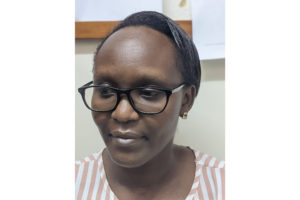My mother-in-law died three days ago. She had pancreatic cancer, an aggressive condition that took away her vitality and left her in pain. Her funeral, held in her hometown of Recife, Brazil, was the following day. I will miss her.
Her death made me think about cancer in different regions of the world. Brazil is an interesting case study to see how economic development changes disease patterns. Though Brazilians claim they are a developing country, one would not think that if you saw the lives of my relatives and friends living here. Many people live better than we do in the USA. Here, diseases of the developing world are likely hidden in favelas, sprawling unplanned areas where poor Brazilians reside. From the standpoint of cancer, Brazil is intermediate between the USA and sub-Saharan Africa.
There is a lot of cancer in the USA, more than I imagined. The prevalence rate is 442.4 cases per 100,000 people. The three most common types are breast, prostate, and lung. The average American lives to be 79 years old. In Africa, the prevalence is 133 per 100,000 population, but the average lifespan is much shorter, 63 years for men and 66 years for women. The most common cancers are breast, cervix, and prostate. Brazil is in the middle of the USA and Africa with a cancer prevalence of 217 cases per 100,000 population and an average lifespan of 75.8 years. The most common cancers in Brazil are breast, prostate, and lung, like in the USA. In summary, Brazilians have cancer rates that are similar to people living in Africa (much lower than in the USA) but the types of cancer they get are similar to Americans.
Why is cancer common in the USA and less so in Africa? Most epidemiologists think it is because of lifestyle, overweight, low physical activity, poor diet quality, and too much alcohol.
Why is cancer common in the USA and less so in Africa? Most epidemiologists think it is because of lifestyle, overweight, low physical activity, poor diet quality, and too much alcohol. Obviously, Americans live a lot longer than Africans. Since cancer incidence increases with age, the older population in the USA contributes to the difference in numbers. Clearly, though, many people in the world are living lives that increase their risk of cancer. Did my mother-in-law? Not to my knowledge. She died of pancreatic cancer. There are some lifestyle factors associated with this condition (smoking, obesity, and a diet low in fruits and vegetables) that increase risk. She had none of these. She has no family history of the condition, either. Was there something she could have done to prevent getting pancreatic cancer? Or would it have happened no matter what? Unknown.
Whether my mother-in-law fell ill with pancreatic cancer in Brazil, the USA, or Malawi, her survival after diagnosis would have been the same, only a few months. Not all cancers have such uniformity of survival around the world. Consider pediatric acute lymphoblastic leukemia (ALL). American children with ALL have a 90% cure rate, defined as 10 years of disease-free survival. The same disease in Africa has a 90% mortality rate; only 10% of African children with ALL survive for 10 years after diagnosis.
Cancer is awful. As an American, I have a 1 in 3 chance of being diagnosed with cancer in my lifetime. Please take it seriously. If you engage in risk factors that increase your cancer risk (smoking, poor diet, sedentary), change your life today. My mother-in-law and her family suffered greatly. You do not want to go through this.






